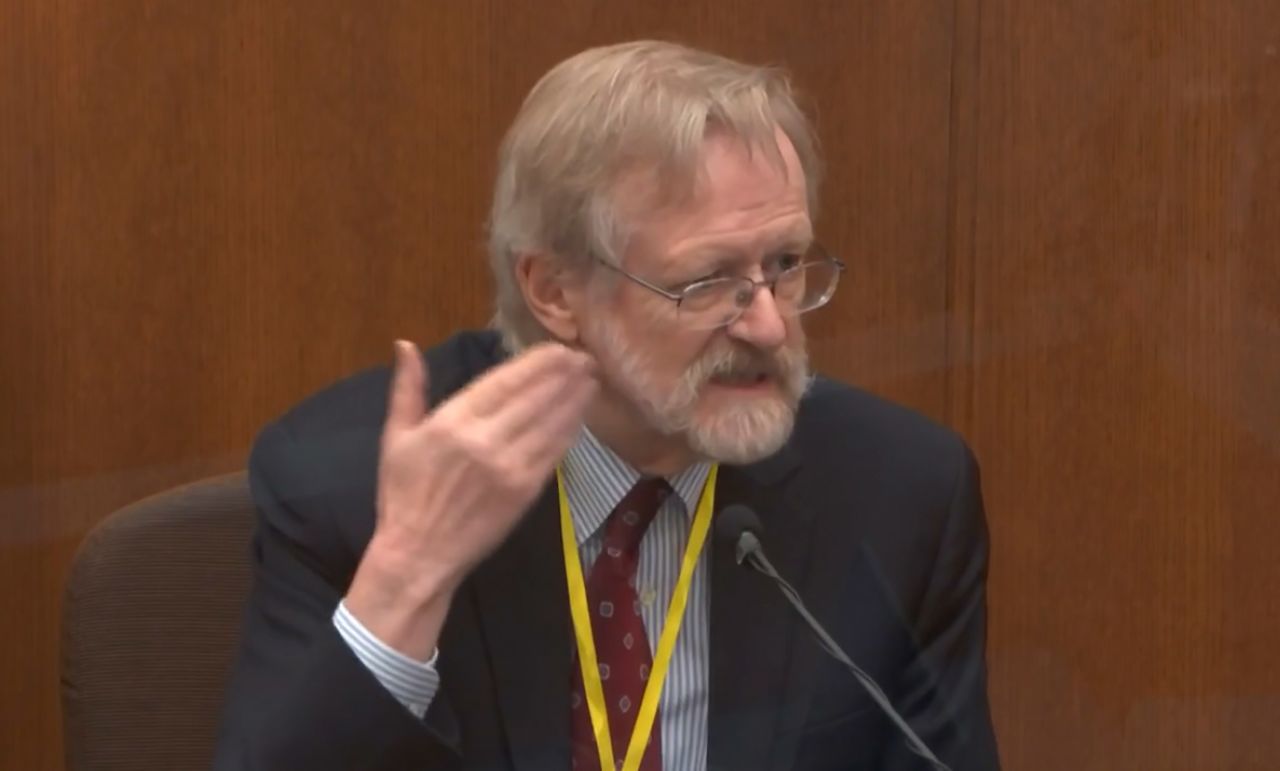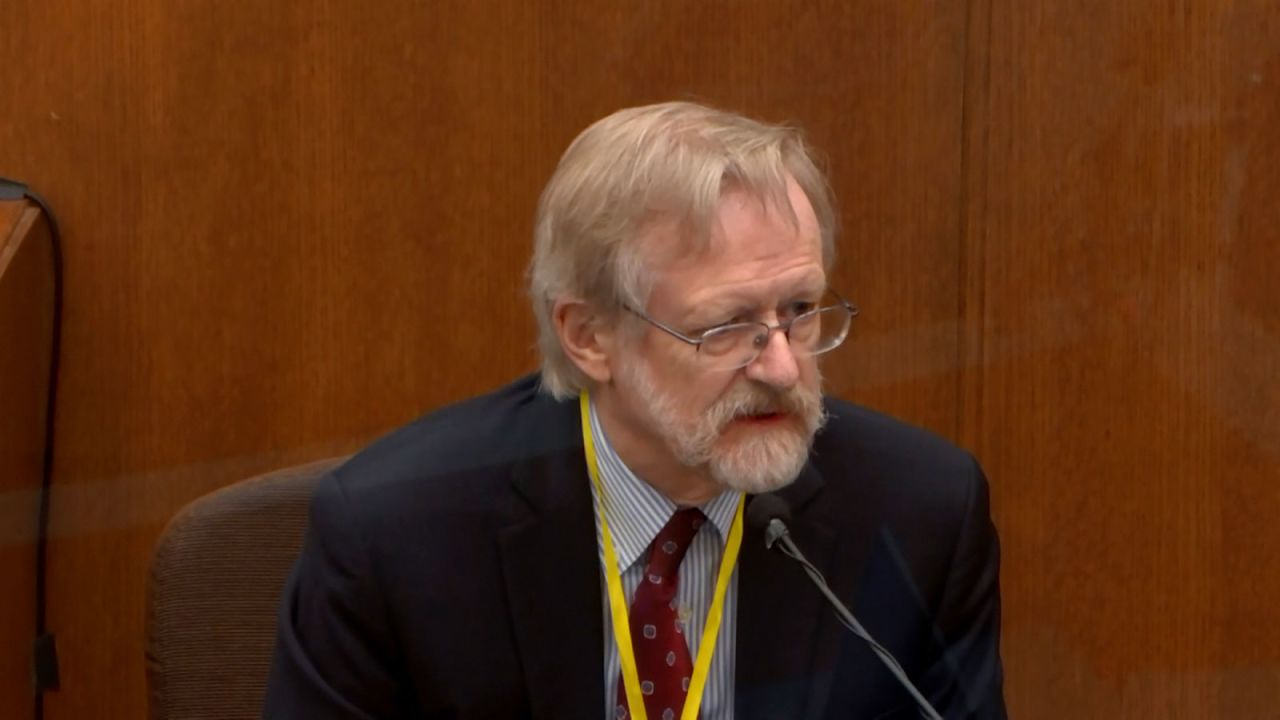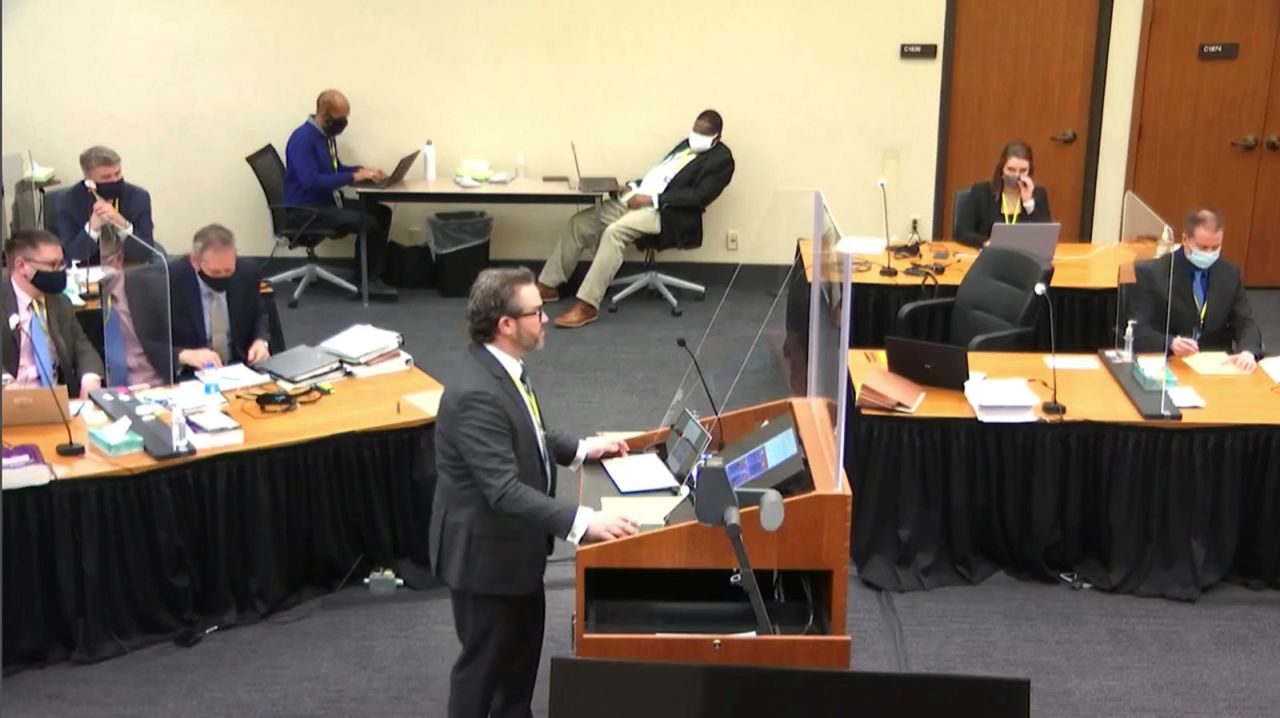LAPD Sgt. Jody Stiger testifies on Wednesday, April 7.
Court TV/Pool/AP
It’s day nine of testimony in the trial of former Minneapolis Police officer Derek Chauvin, who has been charged in the death of George Floyd.
A series of witnesses took the stand in court yesterday during the prosecution’s portion of the trial.
If you’re just reading in, here’s what happened in court yesterday:
James Reyerson, senior special agent with the Minnesota Bureau of Criminal Apprehension, testified that he could hear Floyd saying he “ate too many drugs” in a video of the May 25, 2020 incident, but later acknowledged in redirect that Floyd could have said something different.
Reyerson was shown video of the incident and asked by defense attorney Eric Nelson, “Did it appear that Mr. Floyd said, ‘I ate too many drugs?’” “Yes, it did,” Reyerson said.
After a short break, Reyerson was recalled to the stand by the prosecution and they played him a longer video that included the same audio. Prosecuting attorney Matthew Frank asked if he was able to tell what Floyd was saying.
“Yes, I believe Mr. Floyd is saying, ‘I ain’t doing no drugs,’” Reyerson said, contradicting his earlier answer.
Frank followed up, “That’s a little different than what you are asked about when you’re only saw a portion of the video, correct?” “Yes, sir,” Reyerson said.
LAPD Sgt. Jody Stiger, a use-of-force expert, testified that Chauvin had an obligation to take into consideration whether Floyd was in distress when considering to continue the type of force he was applying. “As the time went on, clearly in the video you could see that Mr. Floyd’s medical — his health was deteriorating,” Stiger said.
Stiger also testified that officers are trained that they can put their knee in between the shoulder blades at the base of the neck of a suspect to hold them on the ground.
Asked by Nelson if this was standard police practice to his knowledge, Stiger, a use-of-force expert, said yes.
A pair of forensic scientists testified about what was found in a Mercedes at the scene and in the squad car Floyd was moved to.
McKenzie Anderson, a forensic scientist at the Minnesota Bureau of Criminal Apprehension, testified that the blood found in the back of a squad car in May 2020 belonged to Floyd. Anderson spoke specifically about eight specific locations in the vehicle where blood was found.
“From all eight of those locations, I obtained a single source male DNA profile that matches of George Floyd, and again this DNA profile would not be expected to occur more than once among unrelated individuals in the rural population,” Anderson said.
Giles, a forensic scientist also with the Minnesota Bureau of Criminal Apprehension, testified about tests she conducted on two pills found in the Mercedes in May 2020.
“The tablets contained methamphetamine and fentanyl,” Giles said.


























